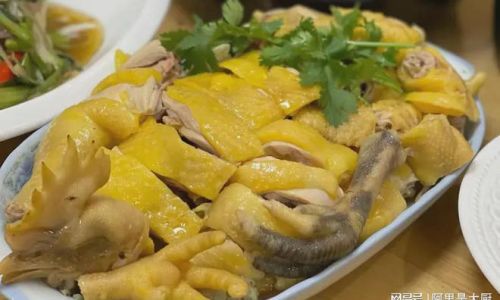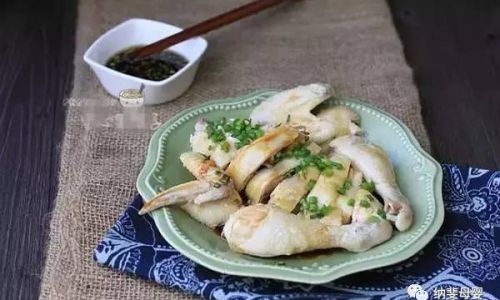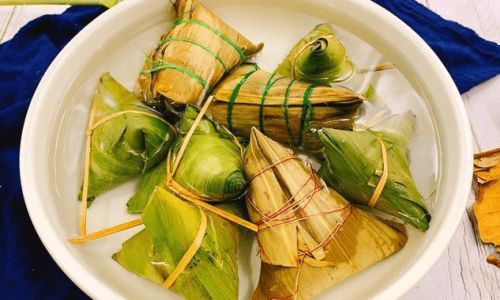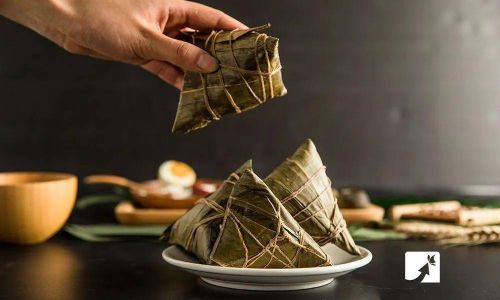Introduction
White cut chicken, a staple of Cantonese cuisine, is celebrated for its minimalist preparation and emphasis on preserving the natural flavors of the poultry. Unlike fried or heavily seasoned chicken dishes, white cut chicken is simmered or steamed until tender, resulting in a delicate texture and clean taste. However, the true magic of this dish lies not in the chicken itself but in the dipping sauces that accompany it. These sauces, often a harmonious blend of aromatic ingredients, elevate the humble bird into a culinary masterpiece. This article delves into the world of dipping sauces for white cut chicken, exploring their historical roots, regional variations, and the science behind their flavor pairings.
The Philosophy Behind Dipping Sauces
In Chinese culinary tradition, dipping sauces serve as both a flavor enhancer and a digestive aid. They are designed to complement, not overpower, the main ingredient. For white cut chicken, which is prized for its mild, almost neutral flavor, the sauce acts as a bridge between the meat and the diner’s palate. The goal is to create a balance between the chicken’s subtle sweetness and the sauce’s umami, spice, or acidity. This philosophy reflects the broader Chinese culinary principle of he (harmony), where opposing flavors unite to create a cohesive dining experience.
Classic Dipping Sauces: A Symphony of Flavors
-
Ginger-Scallion Oil Sauce
The most iconic accompaniment to white cut chicken is the ginger-scallion oil sauce. Its preparation is a ritualistic process that begins with finely minced fresh ginger and scallions. The ingredients are combined with hot peanut or sesame oil, which cooks the aromatics gently, releasing their fragrant oils. A pinch of salt and a drizzle of soy sauce may be added for depth. The result is a pungent, slightly viscous sauce that clings to the chicken, enhancing its natural juiciness. The ginger’s warmth cuts through the chicken’s richness, while the scallions add a fresh, grassy note. -
Soy Sauce Blends
Soy sauce, a fermented staple in Chinese pantries, forms the base of many dipping sauces. For white cut chicken, chefs often use a light soy sauce (生抽) for its saltiness and a dark soy sauce (老抽) for color and subtle sweetness. This blend is sometimes enriched with rice vinegar, which adds a bright tang, or a touch of sugar to balance bitterness. Some variations include minced garlic, chili flakes, or sesame seeds for texture. The key is to achieve a balance where no single flavor dominates.
-
Chili-Based Sauces
In regions with a penchant for spice, chili-infused sauces reign supreme. A popular Sichuanese variation combines chili oil, Sichuan peppercorns, and fermented black beans, creating a numbing heat (ma la) that contrasts with the chicken’s tenderness. In Guangdong, a milder approach might use fresh red chilies, garlic, and lime juice for a vibrant, citrusy kick. These sauces cater to those who prefer their meals with a fiery edge. -
Oyster Sauce and Ginger
Oyster sauce, a thick, umami-rich condiment made from oyster extracts, is another beloved companion to white cut chicken. When paired with grated ginger and a splash of Shaoxing wine, it creates a sauce that is simultaneously savory and aromatic. The oyster sauce’s briny depth complements the chicken’s mildness, while the ginger adds a refreshing zing.
Regional Adaptations: From North to South
China’s vast geography has given rise to countless regional interpretations of white cut chicken dipping sauces. In the north, where winters are harsh, sauces often incorporate heartier ingredients like crushed garlic, black vinegar, and even a dollop of sesame paste for warmth. In the coastal provinces of Fujian and Zhejiang, seafood-infused sauces—such as those made with fermented shrimp paste or dried scallops—add a briny complexity. In Hong Kong, a fusion-style sauce might blend hoisin sauce, plum vinegar, and a hint of five-spice powder, reflecting the city’s cosmopolitan palate.
The Science of Flavor Pairing
The effectiveness of a dipping sauce hinges on its ability to interact with the chicken’s proteins and fats. When the sauce is applied, its components—such as amino acids in soy sauce or volatile compounds in ginger—bind to the meat’s surface, creating new flavor molecules through the Maillard reaction. This chemical interplay enhances the perception of umami, a taste profile particularly associated with savory dishes. Additionally, the sauce’s viscosity ensures it adheres to the chicken, delivering a concentrated burst of flavor with each bite.
Homemade vs. Store-Bought: The Debate
While store-bought sauces offer convenience, purists argue that homemade versions are unparalleled in freshness and complexity. Pre-made ginger-scallion oil, for example, often lacks the vibrant green hue of freshly chopped scallions, which oxidize quickly. Similarly, mass-produced chili sauces may use preservatives that dull their spice. However, modern chefs are experimenting with hybrid approaches, such as doctoring store-bought sauces with fresh herbs or citrus zest to strike a balance between ease and authenticity.

Health Considerations and Modern Twists
As dietary preferences evolve, so do dipping sauces. Low-sodium soy sauces, coconut aminos, and date syrup are now common substitutes for traditional ingredients. Vegan variations omit animal products, using mushroom-based seasonings or smoked paprika to mimic umami. For health-conscious diners, a sauce of pureed cucumber, mint, and lime juice provides a refreshing, low-calorie alternative.
Cultural Significance: Beyond the Plate
Dipping sauces for white cut chicken are not merely condiments—they are cultural artifacts. During Chinese New Year, families often prepare an elaborate seven-sauce platter, each representing a different blessing. The act of dipping the chicken symbolizes humility, as diners bow their heads slightly to coat the meat, a gesture of respect for the dish’s simplicity. In some regions, the sauce’s ingredients are chosen based on their phonetic symbolism; for instance, ginger (jiang) sounds like “auspicious” in Cantonese, inviting good fortune.
The Global Influence: Fusion and Innovation
In recent years, white cut chicken has transcended its Asian roots, inspiring chefs worldwide to experiment with unconventional dipping sauces. In Melbourne, a restaurant might pair the dish with a yuzu-kosho aioli, while a New York eatery could offer a harissa-yogurt blend. These fusion creations, while controversial among traditionalists, highlight the dish’s adaptability and its potential to bridge culinary cultures.
Conclusion
The dipping sauce for white cut chicken is a testament to the power of simplicity. Whether it’s the timeless ginger-scallion oil or a bold chili-infused blend, each sauce tells a story—of tradition, regional pride, and the endless pursuit of flavor harmony. As global palates evolve, so too will these sauces, yet their core mission remains unchanged: to transform a humble piece of chicken into a canvas of taste, one dip at a time. So the next time you savor this dish, remember that the true artistry lies not in the meat itself, but in the delicate dance of flavors that accompanies it.





0 comments